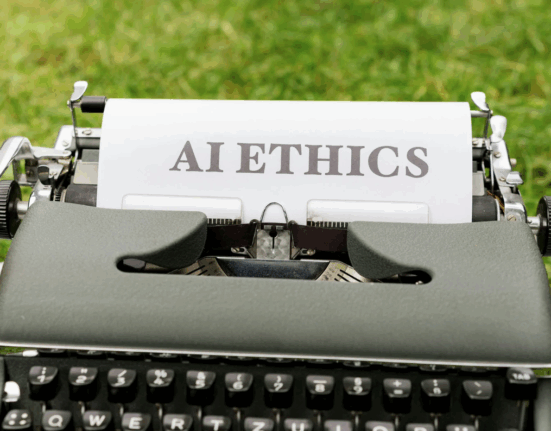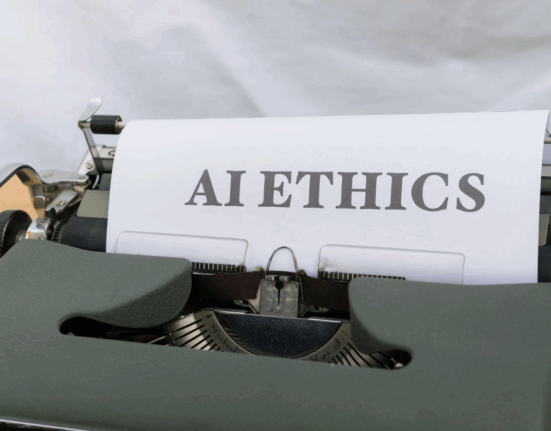Artificial Intelligence (AI) has become one of the most powerful tools shaping our future. But with great power comes great responsibility. Governance in ethical AI systems ensures that this technology serves humanity’s best interests rather than exploiting its weaknesses. Through thoughtful oversight, transparency, and accountability, governance lays the foundation for trust in the age of intelligent machines.
What Is Governance in Ethical AI Systems?
Governance in ethical AI refers to the policies, frameworks, and practices designed to manage how AI systems are developed, deployed, and maintained. It ensures these technologies align with human values such as fairness, privacy, and accountability.
In simpler terms, governance acts like a compass — guiding AI developers and organizations toward ethical decision-making while preventing harm.
Why AI Governance Matters
AI’s capabilities extend far beyond automation. It influences hiring decisions, financial approvals, medical diagnoses, and even criminal sentencing. Without strong governance, biases in algorithms can perpetuate inequality and injustice.
Governance is vital because it:
- Builds trust between humans and machines.
- Prevents bias by enforcing fairness in data use.
- Ensures accountability for decisions made by AI systems.
- Promotes transparency about how algorithms operate.
In short, governance safeguards both innovation and ethics.
Core Principles of Ethical AI Governance
Effective AI governance relies on a set of guiding principles that ensure systems are both high-performing and humane.
1. Transparency and Explainability
Users should understand how an AI system makes decisions. Governance frameworks encourage developers to create explainable models that reveal what data was used and why a specific output was generated.
2. Fairness and Non-Discrimination
Ethical governance mandates diverse, unbiased data sources. This minimizes algorithmic discrimination in areas like employment, healthcare, and finance, ensuring that AI systems serve all demographics fairly.
3. Accountability and Oversight
AI governance assigns responsibility. Organizations must document how their AI works, who maintains it, and how it responds when errors occur. Oversight committees or ethics boards help monitor these systems continuously.
4. Privacy and Data Protection
Governance ensures compliance with privacy laws such as GDPR or CCPA. It dictates how personal data is collected, stored, and anonymized, maintaining user confidentiality and trust.
5. Human-Centric Design
Governance promotes keeping humans in the loop. Ethical AI should enhance human capability — not replace it. This principle ensures that AI remains a tool, not a master.
How Governance Shapes the AI Lifecycle
Governance affects every stage of AI development, from conception to deployment.
Design and Development Phase
At this stage, developers implement ethical design choices. Governance requires:
- Bias testing in training datasets.
- Documentation of model assumptions.
- Inclusion of diverse perspectives during development.
Implementation and Deployment
Before an AI product reaches users, governance ensures it passes ethical and legal checks. Internal audits and external reviews confirm that the system’s behavior aligns with established standards.
Monitoring and Maintenance
Governance doesn’t stop once AI is launched. Continuous monitoring ensures that systems evolve responsibly as they learn. Organizations must regularly update datasets, track system performance, and assess for emerging biases.
Global Approaches to AI Governance
Different nations and institutions are developing governance models to address the unique challenges of AI ethics.
European Union: The AI Act
The EU AI Act sets clear rules for high-risk applications, emphasizing human oversight and transparency. It serves as a global model for ethical governance.
United States: The AI Bill of Rights
The U.S. takes a decentralized approach, emphasizing human rights, algorithmic fairness, and privacy through voluntary standards and sector-specific guidelines.
Asia-Pacific: Responsible Innovation Models
Countries like Japan and Singapore focus on “trustworthy AI,” encouraging cooperation between government and private industry to balance regulation with innovation.
Corporate Governance: The Business Perspective
For organizations, AI governance is not just a compliance exercise — it’s a strategic advantage.
Strong ethical frameworks:
- Build customer trust.
- Reduce legal risks.
- Improve product quality and adoption.
- Strengthen brand reputation.
Companies like Google, Microsoft, and IBM have established internal AI ethics boards to oversee responsible innovation and ensure compliance across global markets.
Challenges in Implementing AI Governance
While essential, governance isn’t always easy to achieve. Organizations often face:
- Lack of standardization: Different nations use different frameworks.
- Data complexity: Large, unstructured datasets can hide bias.
- Transparency gaps: Some AI models (like deep learning) are hard to explain.
- Limited expertise: Few professionals specialize in ethical AI governance.
Addressing these challenges requires cross-disciplinary collaboration between technologists, ethicists, and policymakers.
Tools and Frameworks Supporting Ethical AI Governance
Several frameworks help organizations put governance principles into action:
- OECD AI Principles: Focused on transparency, accountability, and human values.
- ISO/IEC 42001: The world’s first AI management system standard (AIMS).
- UNESCO Ethical AI Guidelines: Promote inclusivity and sustainability.
- NIST AI Risk Management Framework: Helps assess and mitigate ethical risks.
These global standards offer a roadmap for organizations seeking to develop trustworthy AI systems.
AI Governance and the Future Workforce
AI governance also shapes the way humans interact with technology in the workplace. Transparent and accountable systems foster a sense of fairness, allowing employees to trust automation rather than fear it.
As governance evolves, roles like AI Ethics Officer or Algorithm Auditor will become common — blending technology, law, and ethics.
Governance in Generative AI
With the rise of generative AI models like ChatGPT and Midjourney, governance faces new challenges. These systems can create realistic but misleading content. Ethical oversight ensures that creators disclose when content is AI-generated and that data sources respect copyright and consent.
The Future of AI Governance
AI governance is still evolving, but one thing is clear — it will define how humanity coexists with intelligent machines. Future frameworks will likely focus on:
- Global standardization of ethics rules.
- Real-time monitoring of AI decisions.
- Integration of sustainability principles into AI design.
Governance will become as essential to AI as code itself.
Conclusion
Governance in ethical AI systems isn’t just a technical necessity — it’s a moral responsibility. It ensures AI operates within the boundaries of fairness, transparency, and accountability while unlocking innovation that benefits everyone. As AI continues to shape our world, robust governance will be the key to ensuring that technology serves people — not the other way around.
FAQ
1. What does AI governance mean?
AI governance refers to the policies and frameworks that ensure AI systems are ethical, transparent, and accountable throughout their lifecycle.
2. Why is governance important in AI ethics?
It helps prevent bias, ensures fairness, protects privacy, and builds public trust in AI technology.
3. How does AI governance affect businesses?
It guides responsible innovation, minimizes risk, and enhances brand reputation by ensuring compliance with global standards.
4. What are some global AI governance frameworks?
Examples include the EU AI Act, OECD AI Principles, UNESCO’s Ethical AI Guidelines, and ISO/IEC 42001.
5. What’s the future of AI governance?
Expect global harmonization, real-time ethical auditing, and increased collaboration between governments, companies, and civil society.








